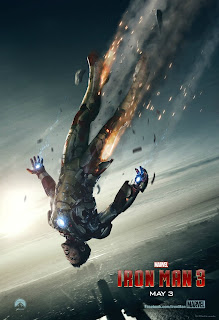Background:
World War Z is (loosely) based on a 2006 novel by Max Brooks. The book is a cracking read, and we were hoping the film would be just as outstanding as its source-material. The production of the film encountered multiple woes, all of which are well documented, but the first few trailers successfully dispelled most audience's doubts about the film. Indeed, in its first weekend, World War Z mightily exceeded all box-office expectations. Critics are divided on the film, while audiences are more generally positive towards horror and action pictures, so have dished out a healthy B+ CinemaScore.
 Post-Converted 3D:
Post-Converted 3D:
World War Z was shot in 2D, using Alexa cameras, and later post-converted into 3D by Prime Focus World. The firm delivered 2076 converted shots, assisted by 400 artists. The firm's website goes into great detail about the conversion, and when stereo firms rave about their own work we tend to listen. We've seen several projects recently where there has been next-to-nothing released officially about the post-conversion process. In contrast, the team involved with World War Z are proud to show off the collaboration they had with the film's creators, and they're glad to talk about their unique approach to 3D film-making. They need not talk too much about their work though, because the proof of it is in the theatre, where their work looked absolutely stunning.
 Does the 3D 'pop'?
Does the 3D 'pop'?
Like 28 Days Later and the Dawn Of The Dead remake before it, World War Z features fast-moving zombies. They're relentless in their pursuit of human flesh, and the undead have a nasty habit of popping at the living. The film-makers make full use of these jump scares, with teeth and clawed hands leaping out at their audience. The 3D effects used don't linger long enough to be hokey; instead they're employed to give you a good fright before the effects are dialled back down to 'classy' again. Between zombie attacks, 'noise elements' like lens flares or ash particles are layered enough to give the audience the perception they're really in the room with Brad Pitt.How's the depth of the 3D?
Fantastic! The film is deceptively small-scale, and is focused (literally) on Brad Pitt's character throughout. Prime Focus World went above and beyond to map out Pitt's face in elaborate detail, so his character feels absolutely 'real' in terms of depth, even in close-ups. Their efforts pay off the most in dialogue scenes, where spatial integrity is maintained perfectly, to the point we'd swear some scenes were filmed in Native 3D. Often an 'over-the-shoulder' shot - where there are three planes of depth caused by an out of focus shoulder at the front of the shot - causes issues for post-conversion teams, sometimes resulting in obviously 'layered' visuals that feel artificial. In World War Z, this pitfall is avoided masterfully.But you don't care about dialogue when it comes to a zombie film, do you? No. You care about the apocalypse! The damage wrought upon Israel, Korea and Philadelphia in World War Z is expertly staged by the film-makers, and their set-pieces are well designed to emphasise the magnitude of the unfolding disasters. In 3D, the cataclysmic events seem that much more devastating, thanks to a large number of helicopter-based shots that help the audience contextualise and comprehend the undead chaos.
 Did it make sense to add 3D to World War Z?
Did it make sense to add 3D to World War Z?
Not in the slightest. The major set-pieces are set in either cramped and dark areas, or dusty and monochromatic landscapes. The characters mostly wear plain looking clothes (which helps sell the realism of the situation) and the undead wear the same clothes too. Even the blood is neutered to be a digitally-altered black colour; presumably to reduce the rating to a PG-13 one that could help boost ticket sales. So, at face-value, this wouldn't be an obvious choice for a 3D film for us. We're happy the team at Prime Focus World proved us wrong though. Perhaps we'll have to revise what our criteria for a '3D-appropriate' film is. There are scenes set in pitch-black rain that work great here, with zero eye strain, and perfect visual clarity achieved. There are others that allow us to focus on one tiny detail amongst a sprawling mass of creatures. It's a great example of what 2013's 3D technology is capable of, and it's another film that proves that post-conversions are capable of standing toe-to-toe with Native 3D works now.
The film itself
Fans of the book's non-linear timeline and documentary style will probably hate World War Z. Likewise, true zombie genre fans. And it's possible those who wanted to see a 'world war' will be disappointed they're instead given a film about a UN health inspector... ha. For one final caveat, it's possible that Palestinian sympathisers will find images in the film unsettling, but then again the film deals with that issue directly and it's therefore hard to argue a sub-textual agenda. With all these caveats out of the way, we found World War Z a perfectly executed Hollywood disaster picture. This isn't a zombie film. Instead, it deserves to be compared to the likes of 2012, The Day After Tomorrow, Armageddon and Deep Impact. In company like that, Z shines. It's far smarter than it deserves to be.
If we had to archive one version, should we save the 2D or the 3D?
In case it's not been obvious enough yet, we'd recommend archiving the 3D version of World War Z. It's a great post-conversion, and you only gain appreciation for the film by seeing it in 3D.



















